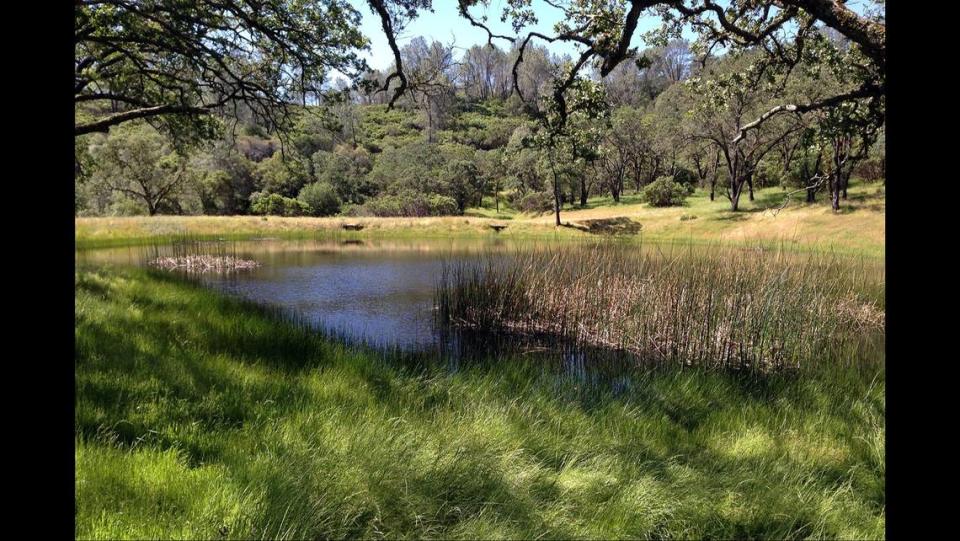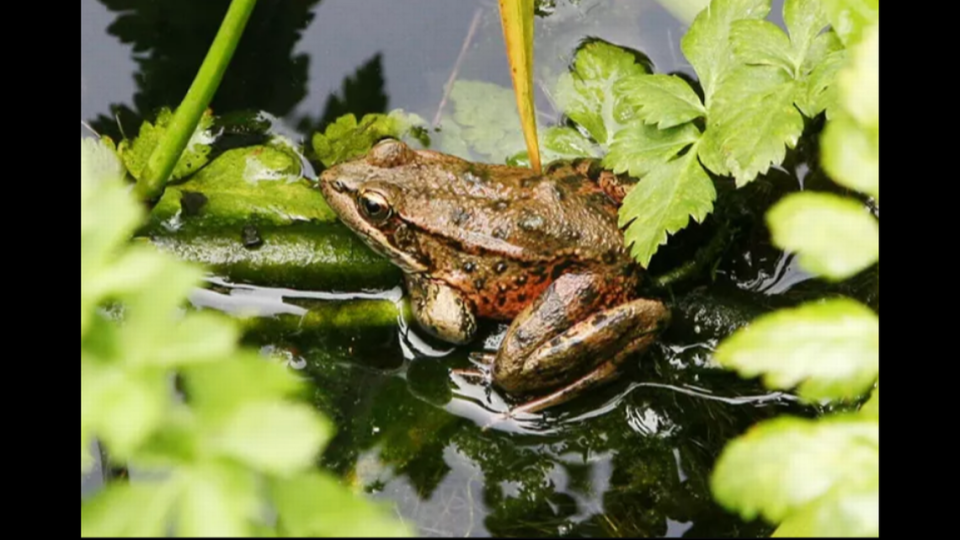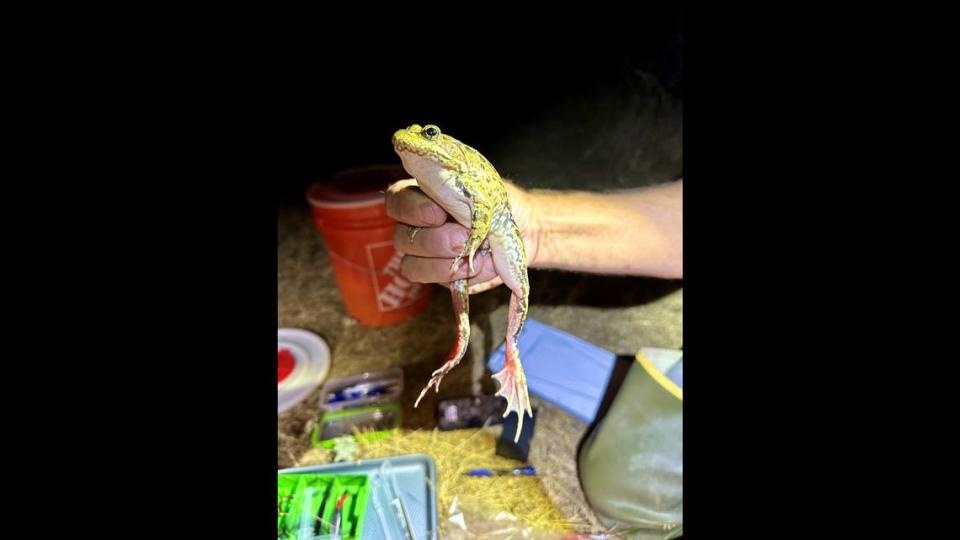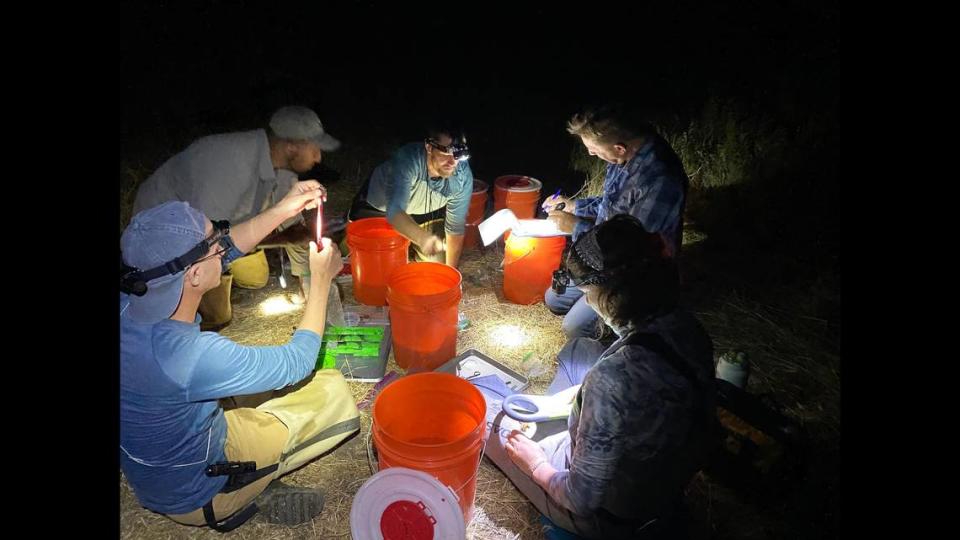Red-legged creature — the largest of its kind in CA — makes comeback. ‘Remarkable’
Before their populations started to dwindle, California red-legged frogs could be found in ponds and wetlands from Northern California all the way down to Mexico.
Now the frog, which is listed as a federally threatened species, primarily resides in coastal drainages from Marin County to San Simeon, according to the National Park Service.
This is only 30% of the frog’s native habitat range.
The amphibian, however, is now steadily rebounding at a 2,000-acre wildland preserve thanks to a project dedicated to the species’ conservation, the Land Trust of Napa County said in a Feb. 28 news release.

While the project is still in its early stages, the efforts in Napa County are “yielding significant initial successes,” the nonprofit said.
“The success of these ponds is remarkable, and future projects like this will assist in the recovery of these threatened species,” Brian Shelton, a biologist with the California Department of Fish and Wildlife, said in the release.
Population dwindles
The California red-legged frog is the state’s largest native frog, the nonprofit said.
The “rare amphibian species” is almost exclusively found in the state of California, according to the National Wildlife Federation.
The frog was made famous by an 1865 short story by Mark Twain, “Celebrated Jumping Frog of Calaveras County,” according to the National Park Service.
The frog, which measures between 2 to 5 inches in length, has a reddish “color on the underside of the legs and belly,” NPS said.

As its population began to decline, the frog disappeared from a number of areas, including Yosemite National Park, which did not see the species for 50 years until conservation efforts began, according to NPS.
A number of factors contributed to the frog’s population decline, including habitat loss and invasive species, the nonprofit said.
Much of the frog’s habitat loss was from “widespread draining of ponds and wetlands for development and agriculture over the past 150 years,” according to NPS.
In the mid-1800s, the frogs were also “intensely harvested” for food, specifically for their legs, NPS said.
Ultimately, the species disappeared from 70% of its native range, the nonprofit said.
Project’s preliminary success
The nonprofit said it set out to “work on a major endangered species conservation effort” for the frogs in 2022.
The project, funded from a grant from the U.S. Fish and Wildlife Service and California Department of Fish and Wildlife, is homed “within a 2,000-acre wildland preserve in southeastern Napa County,” the nonprofit said.
The project includes moving “partial egg masses” from a donor site to ponds on the preserve, the nonprofit said, adding that it also enhances the frogs’ habitat, as well as tags and tracks individual frogs.

So far, four partial egg masses were taken from ponds on the Mitsui Ranch Preserve and placed into three ponds on the preserve, which were enclosed to protect the eggs and tadpoles from outside predators, the nonprofit said.
Then, last spring, the nonprofit said it moved six additional partial egg masses into the preserve’s ponds.
These produced more than 1,500 larvae, the nonprofit said.
At the preserve, the nonprofit said the frogs’ “survival rates have been up to six times higher than other red-legged frog restoration efforts.”
“Thousands of eggs hatched, and hundreds of tadpoles survived to metamorphose into sub-adult frogs in all three ponds,” the nonprofit said.
The “post-metamorphic frogs” are being tracked so the team can study their movement and habitat use, the nonprofit said.
Over the project’s first two years, the nonprofit said more than 800 frogs developed from tadpoles.

“We are still early in this project, so the results are still preliminary, but this is the highest success rate so far in a restoration project for this species,” Jeff Alvarez, a consulting biologist and red-legged frog expert with The Wildlife Project, said in the release.
Though there have been other translocation projects for the species, “no other project has reported so many frogs becoming successfully established,” Alvarez said.
“This has been an outstanding opportunity to utilize our protected wildlands to support native biodiversity through endangered species conservation and recovery,” Mike Palladini, a director with the nonprofit, said in the release.
Some rare frogs in Southern California are having sex again. And not a moment too soon
Rare frog gained new foothold until California fires ‘annihilated’ habitat, experts say
Survival of this frog in California wildfire scar lends ‘some hope’ for threatened species

